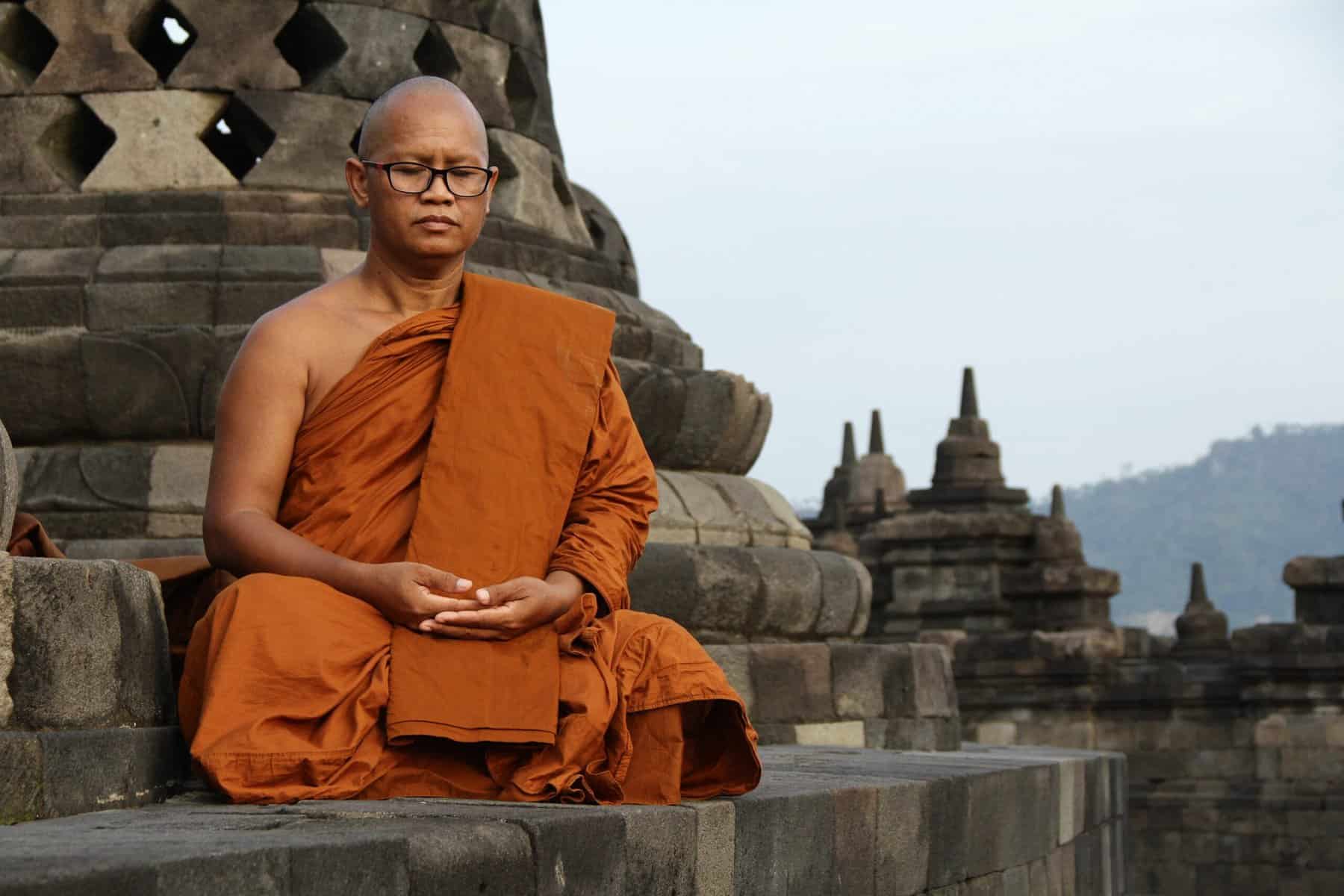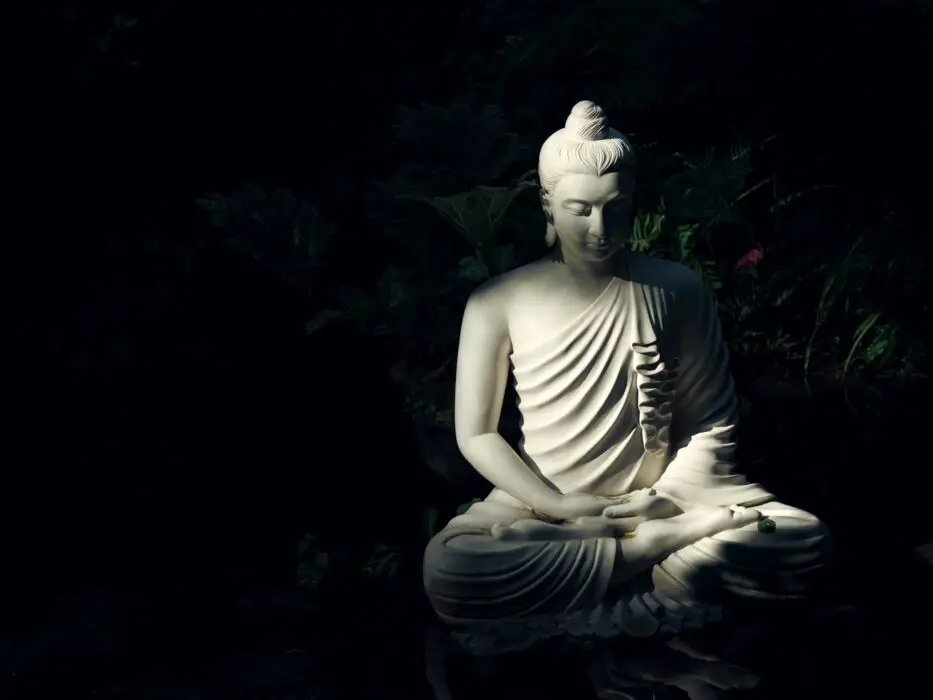What is the oldest meditation technique?
From what we know, meditation comes from a region that is now northern India and southeastern Pakistan and was part of religious worship. This meditation technique likely involved chanting mantras and/or contemplation.
Ancient, enduring, and powerful: that’s meditation. Since our earliest civilizations, we humans have had the impulse to self-reflect and control our thoughts.
The oldest written mention of meditation dates back to 1500 BCE in Hindu scriptures (that’s over 3,500 years ago) but evidence of meditative practice goes back even further.
Over the millenia, meditation has evolved and taken on various forms, with different cultures adopting their own techniques. From ancient Hindu scriptures to Zen practices in China and Japan and beyond, each culture has contributed to the development of meditation techniques.
Given how old meditation is, it’s impossible to determine exactly what is the oldest meditation technique or where it was first practiced. However, by delving into the history of meditation and how different cultures adapted this art, we can uncover fascinating insights into the enduring power of mindfulness and how it has shaped our world today.
Earliest History of Meditation
In the 1920s, archaeologists excavating sites of the ancient Indus Valley Civilization in modern-day Pakistan discovered stone seals dating from as early as 2350 BCE (over 4,300 years old) showing figures sitting in a meditation pose (Mulabandhasana), eyes closed and serene. While it’s up for debate which Hindu gods these may depict, they are our earliest known representations of yoga and meditation.
Watch the incomparable Kino MacGregor performing Mulabandhasana, an advanced yoga meditation pose:
The earliest written references to meditation can be found in the Vedas, which are a collection of ancient Hindu texts that date back to 1500 BCE earliest. Veda means ‘knowledge’ in the Sanskrit language. Scholars believe that the information in the Vedas was passed orally from Hindu sages (rishis) to students for hundreds of years before being written down, meaning that meditation practices were being taught well before 1500 BCE.
The Rig Veda, considered the oldest of the Vedas, is a collection of hymns in praise of various gods. In this text, meditation is mentioned in the context of worshiping the gods or the gods themselves meditating.
Hundreds of years later, Indian sages wrote the Upanishads, also considered to be part of the Vedas. There are over a thousand of these philosophical texts, which were written at different times by different people, probably between 800 and 500 BCE.
The Upanishads introduce the concept of dhyana, a Sanskrit word for ‘meditation’ or ‘contemplation’. In essence, these texts describe the path to enlightenment through self-realization – achieved by dedicated practice of various kinds of yoga, including meditation, mantra chanting, and physical asanas.
The practice of yoga meditation involves a combination of physical postures, breathing exercises, and concentration.
Later Hindu sacred texts, including the Yoga Sutras of Patanjali (circa 100 BCE to 400 CE) and the Bhagavad Gita (circa 400 BCE to 200 CE) provide yet more guidance on meditation and the correct way to live a spiritual life leading to enlightenment.
With the emergence of Buddhism in the 4th century BCE, meditation continued to evolve with this newer religion. (Buddhism has its origins in Hinduism, so it’s not surprising that meditation continued to be important).
The Evolution of Meditation in Buddhism
Source: ReligionforBreakfast
As Buddhism developed over time, meditation changed in form and focus. In its early stages, Buddhism had two main forms of meditation: Samatha and Vipassana.
Samatha meditation focused on calming the mind and developing concentration, while Vipassana meditation aimed to develop insight into the nature of reality. These two practices were later combined to form the basis of modern Buddhist meditation techniques.
As Buddhism spread throughout Asia, different schools and traditions emerged, each with its own approach to meditation.
The Mahayana tradition, for example, emphasized the practice of compassion and the visualization of deities, while the Theravada tradition placed greater emphasis on the practice of mindfulness.
Despite these differences, however, all Buddhist meditation practices share the same goal: to develop greater awareness and insight into the nature of the mind and the world around us.
The evolution of Buddhist meditation in the history of meditation is a testament to the adaptability and resilience of this ancient practice. From its humble origins in the teachings of the Buddha, meditation has continued to evolve and develop, spreading throughout the world and influencing countless individuals and cultures.
Next, let’s take a look at the Zen Buddhist practices in ancient China and Japan.
Zen Buddhism and Meditation in Ancient China

By the 2nd century CE, Buddhism was spreading from India to China via trading routes. Early Buddhist missionaries to China in this period introduced meditation (dhyana), which became the central pillar of Zen Buddhist practices and remains so today – in fact, ‘chan’, the Chinese word for Zen, is derived from the Chinese translation of dhyana. From China, Zen spread further into Asia, where it got a firm foothold in countries like Mongolia, Cambodia, Thailand, and Japan.
Here are four important points about Zen meditation:
1) Zen meditation, also known as Zazen, is a form of seated meditation that focuses on posture, breath, and awareness. The goal of Zazen is to quiet the mind and cultivate a deep sense of inner peace and clarity.
2) One of the key elements of Zen meditation is the use of a meditation cushion, or zafu, which helps to support the lower back and hips during seated meditation. Zen practitioners also often use a small bench, or seiza, to help them maintain a comfortable and stable posture.
3) Another important aspect of Zen meditation is the use of a koan, or a riddle or question that is used to help the practitioner break through their conceptual thinking and access deeper levels of awareness. Some famous koans include “What is the sound of one hand clapping?”and “What was your original face before you were born?”
4) Zen meditation has had a profound impact on the culture and spirituality of China, Japan, and other Asian countries where it was widely spread. In Japan, for example, Zen ideals influenced traditional Japanese art, such as the tea ceremony (sado), flower arranging (ikebana), and rock gardens (karesansui).
Today, Zen meditation is practiced all over the world, and continues to be a powerful tool for personal growth and transformation.
Ancient Greek and Roman Meditation Techniques
Eastern meditation ideas, particular Buddhism, spread to ancient Greece with the expansion of the Greek empire to Central Asia in the 4th century BCE – and perhaps even earlier through trade.
It’s not clear the extent to which early Greek philosophers like Plato (ca 428 – 348 BCE) and Aristotle (384 – 322 BCE) were inspired by Buddhist meditation techniques; however, they believed in the power of contemplation and introspection as a means to achieve a deeper understanding of the self and the world.
This led to the practice of ‘philosophical meditation,’ which involved focusing on a specific question or idea and allowing one’s thoughts to flow freely.
In ancient Rome, the practice of meditation was closely tied to the philosophy of Stoicism. Stoics believed in the importance of cultivating a calm and rational mind in order to navigate the challenges of life with clarity and purpose. They practiced ‘prosoche,’ which involved paying attention to one’s thoughts and emotions in order to gain a better understanding of them and maintain a sense of inner calm.
Ancient Greek and Roman methods of meditation may have taken different approaches, but they share a common goal: to achieve a state of inner peace and clarity through introspection and contemplation.
The Significance of Meditation in Ancient Cultures
Meditation in various forms has been an essential aspect of ancient religions, including such as Hinduism, Buddhism, Jainism, Taoism, Judaism and many more.
In Hinduism, meditation was a means to attain a higher state of consciousness and connect with the divine. In Buddhism, meditation was a tool to achieve enlightenment and liberation from suffering. In Taoism, meditation was used to balance the yin and yang energies and attain inner peace.
Ancient cultures believed that meditation was a path to self-discovery, self-realization, and spiritual growth.
As today, meditation was not just an individual practice but also a community activity. It was practiced in temples, ashrams, and monasteries where people shared their experiences and insights.
Meditation in ancient cultures has influenced modern mindfulness practices, and many meditation techniques have been adapted and integrated into contemporary mindfulness and self-reflection practices.
As you reflect on your own meditation journey, consider this metaphor: meditation is like a time machine that allows you to connect with the past, present, and future all at once.
By practicing meditation, you are tapping into a ritual that humans thousands of years ago developed to improve their lives – and continue to adapt to their needs. Through meditation, you gain a deeper understanding of yourself and your own inner workings, as well as cultivate a sense of peace and mindfulness in the present moment.
And, perhaps most importantly, you can create a more positive and fulfilling future for yourself and those around you.
So, whether you’re a seasoned meditator or just starting out, remember that the power of this ancient practice is as relevant today as it was thousands of years ago.
You may also like...
- How Does Yoga Increase Self-Awareness? (all 10 ways) How does yoga increase self-awareness? By practicing all forms of yoga (physical yoga, meditation, and...


